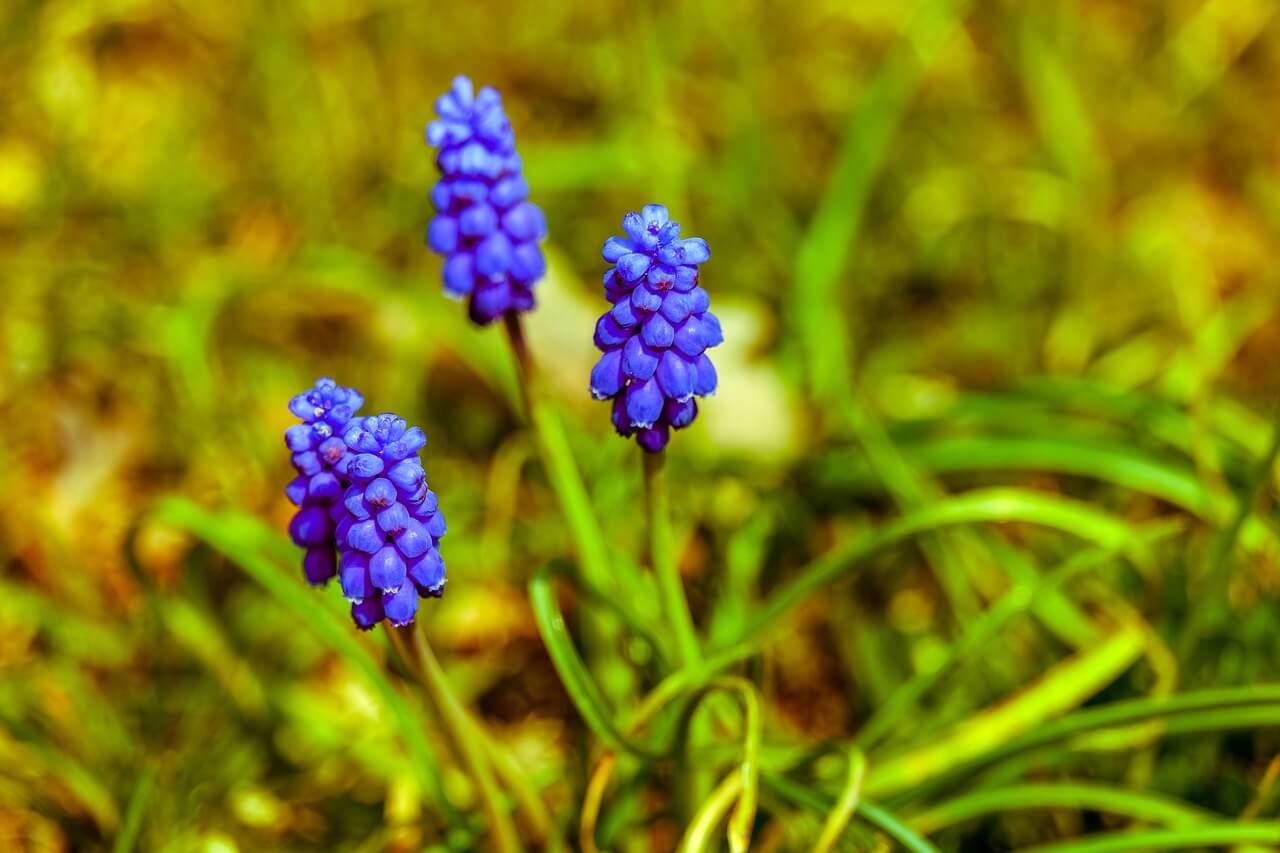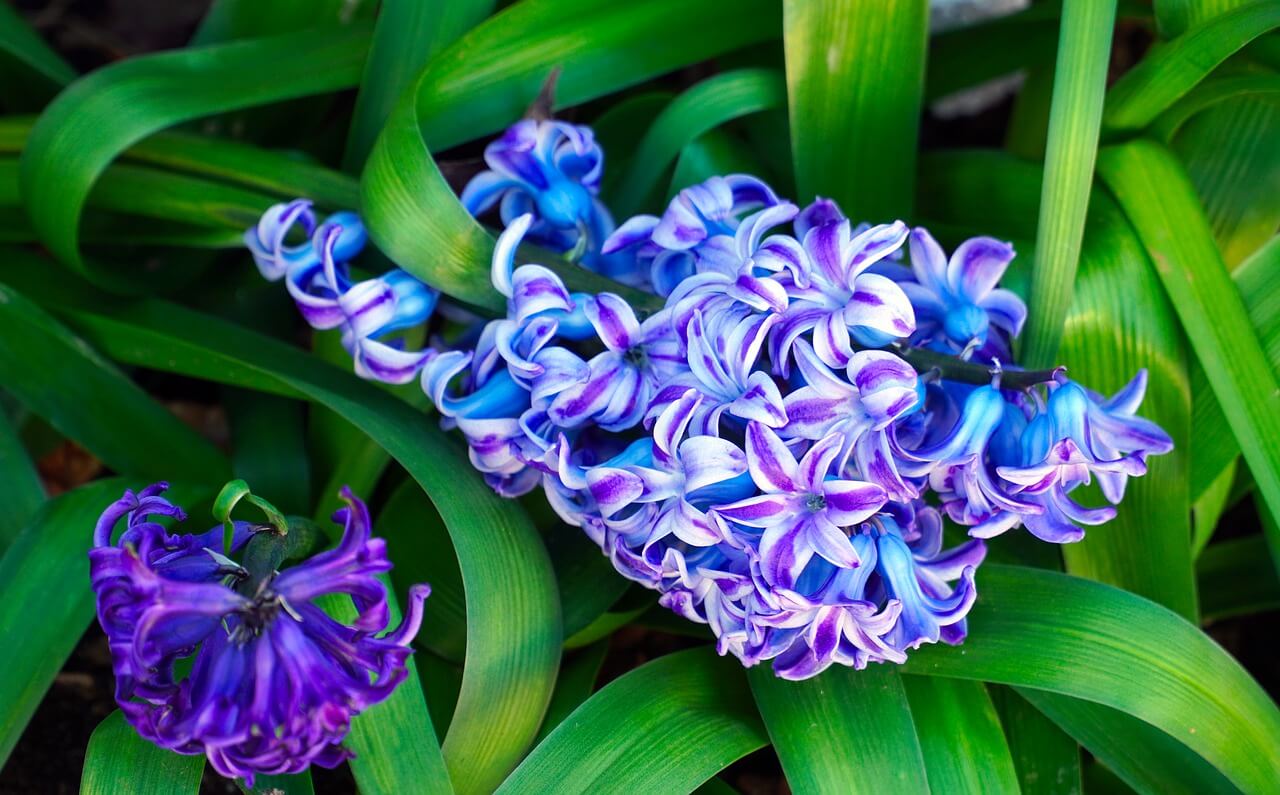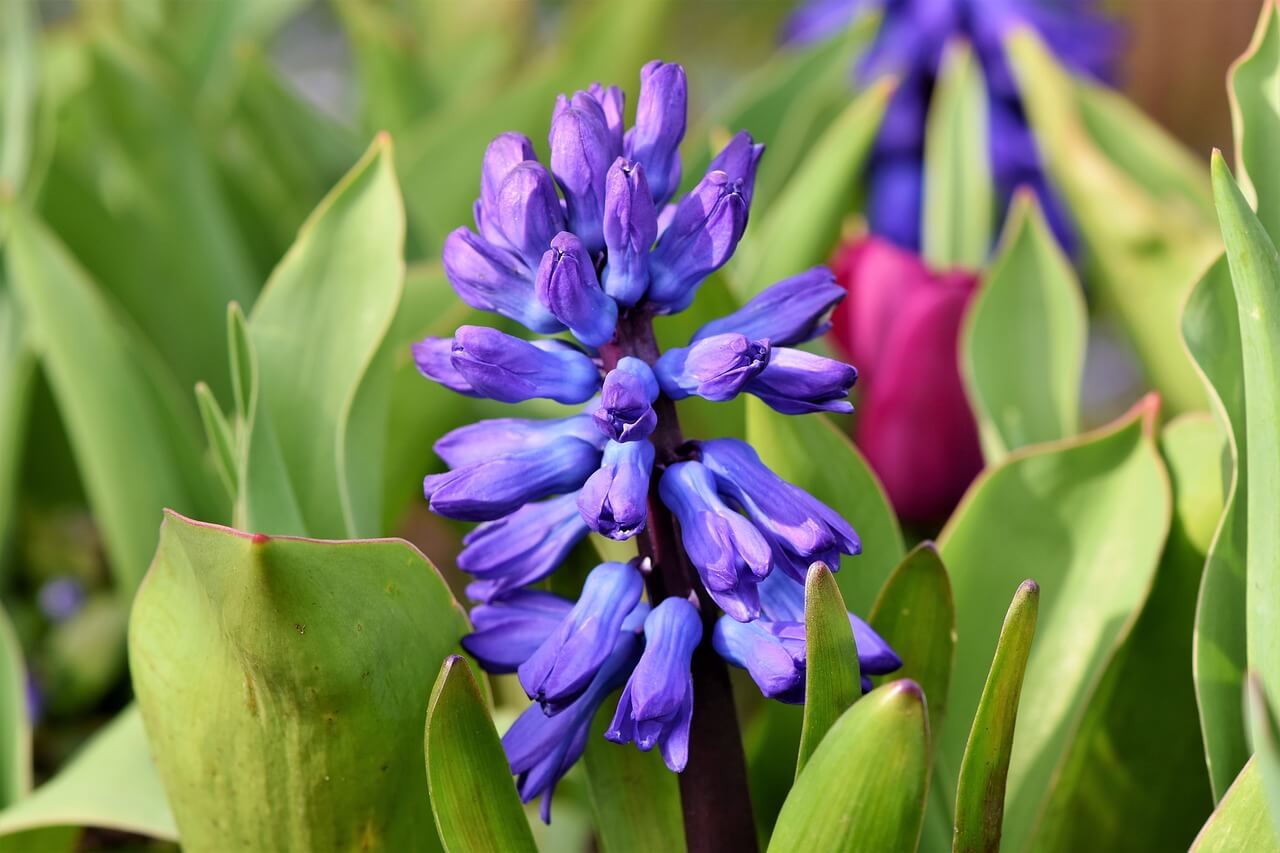Hyacinth is a beautiful, fragrant plant – one of the sweetest selling ones out there, in fact. If you’re looking for how to care for Hyacinth, then look no further – we’ve got you covered!
What You'll Learn Today
How To Care For Hyacinth Outdoors

Hyacinth are a relatively easygoing outdoor plant, which doesn’t require too much fussing. All you need to do is:
- Prepare and dig over your soil prior to planting, making sure that there are no small weeds.
- Add a good layer of organic matter, like compost or well rotted manure.
- Plant the bulbs in the autumn, making sure that you have chosen them a sunny spot where the soil drains well.
- Place the bulbs in the soil about 10cm deep, and ensure that there is at least 8cm of space between them.
- Cover them with soil and gently firm them in.
- Water in your new bulbs well, but after this you should only have to water when the soil is looking dry or you are experiencing long periods of hot weather.
- Make sure that you wear gloves when planting these bulbs, as they can irritate the skin.
How To Care For Hyacinth Indoors
Hyacinth indoors make your home smell truly delicious! Let’s look at how to care for them inside:
- They will need multi purpose compost that contains no peat, for the best results.
- Plant each bulb about 5cm apart in the soil, making sure they do not touch each other.
- Fill compost around the bulbs, but ensure that the top of each bulb is still visible.
- Water them in lightly, so that they get a drink without drowning, the cover them up and keep them in a cool dark spot until shoots start to appear.
- Once you see shoots coming up,move the hyacinths into a light, airy space for the rest of their time.
- Your indoor hyacinths will only have one flowering season indoors, but you can plant the spent bulbs outside to continue for many years!
If you’re looking for a great resource to learn all about the ins and outs of hyacinths, try this from Gardener’s World.
How Often To Water Hyacinth
Hyacinth won’t like their roots to be sopping wet, but neither will they respond well to drying out completely.
- As a general rule, you should check your hyacinth for dry soil every 2 to 3 days.
- Water it if the soil has completely dried out, but don’t completely soak it.
- In the winter you will need to water less as there will be more rainfall, but keep an eye on it if there is a dry spell.
- Indoor hyacinths won’t need extra watering as long as their soil is moist, so you can just check it with a finger as you pass by the pot.
- Too much water will damage the roots of this fragrant beauty, so you need to avoid over watering at all costs.
- Conversely, drying out completely won’t do your hyacinths any good, so you need to find the balance.
What To Feed Hyacinth

The feeding of hyacinths differs from indoor to outdoor growing blooms, because of the different growing conditions.
Indoor:
- You should apply a good quality liquid fertiliser that is high in Potassium (tomato food will do just fine).
- Add this to your pots around once a week, to give your blooms the boost they need, and carry on feeding for at least 6 weeks after flowering.
- Continue to feed until the leaves start to turn yellow; this is a sign that the growing season is nearing its end.
- If you are growing your indoor hyacinths in glass vases, you will not need to add any fertiliser at all.
Outdoor:
- A general purpose feed should be added to your borders at a level of 1oz to 1 square yard.
- Do this is late February, to encourage the best blossoms from your plants as the year goes on.
- Outdoor hyacinths require little more intervention than this, as they will be receiving nutrients from the soil around them.
How Much Sun Does Hyacinth Need
Hyacinth are sun lovers, and will do best in full sun. If you have planted one that you intend to keep in the garden for a few years, you’ll need to pick your spot!
Full sun will give your hyacinths the largest flowers and the straightest stems, and will give you the best and most fragrant results.
Your hyacinths will still bloom in light shade, or even partial shade, but they won’t be quite as spectacular.
How To Care For Hyacinth After Blooming

Outdoor:
Once the flowers are all over you should remove the dead and brown blooms, but leave the foliage alone as this will die back naturally.
The leaves are there to give the bulbs energy for next year’s flowers, so leave them to die back by themselves.
Leave the bulbs in the ground until the following year; they will over winter and pop back up with their beautiful flowers and scent!
If you live in a very warm area, you should dig up the bulbs and pop them in the refrigerator for 6-8 weeks
Hyacinths need this period of cold in order to bloom well; refrigerating them will make them think it’s winter.
Indoor:
Once your blooms have died back completely and the foliage has yellowed and dropped off, you should dig up your bulbs.
Don’t keep them in cool storage at this point; the bulbs need to gather their energy for the following year, so plant them straight out.
They will do well if planted out in your garden, just follow the usual rules for planting hyacinth.
They need full sun and well draining soil which has had some compost added, and they should reward you with beautiful flowers next year!
This useful video explains what to do with your indoor hyacinths after they have finished flowering:
Hyacinths are wonderful plants; easy to care for and utterly beautiful. Now that you know better how to care for hyacinths, you can enjoy their sensational beauty and gorgeous smell!
Hyacinth Key Facts
| Name | Hyacinth |
| Scientific Name | Hyacinthus |
| Family | Asparagus |
| Light Requirements | Full sun |
| Soil Requirements | Well drained, moderately fertile |
| Temperature Requirements | 64 – 68 degrees F (18-20 degrees C) for good flowering |
| Water Requirements | Established plants need watering only every 2-3 days |
| Fertilizer Requirements | General purpose fertiliser in late February |
| Bloom Time | 2-4 weeks |
| Pests | Generally pest free |
| Size | 8-10 inches tall |
I often get itchy skin after I dig up and replant my Hibiscus bulbs. Are they toxic?
These bulbs are considered mildly toxic; they contain Oxalic Acid, which can cause skin irritation. It is always advised to wear gardening gloves when handling them, and keep them away from children and pets.
What is the hottest temperature that a hyacinth will withstand in the summer?
A hyacinth can cope with very hot temperatures, but you will find that if the mercury rises to between 95-105 degrees F (35-40 degrees C), your plant will start to struggle. Hope this helps!